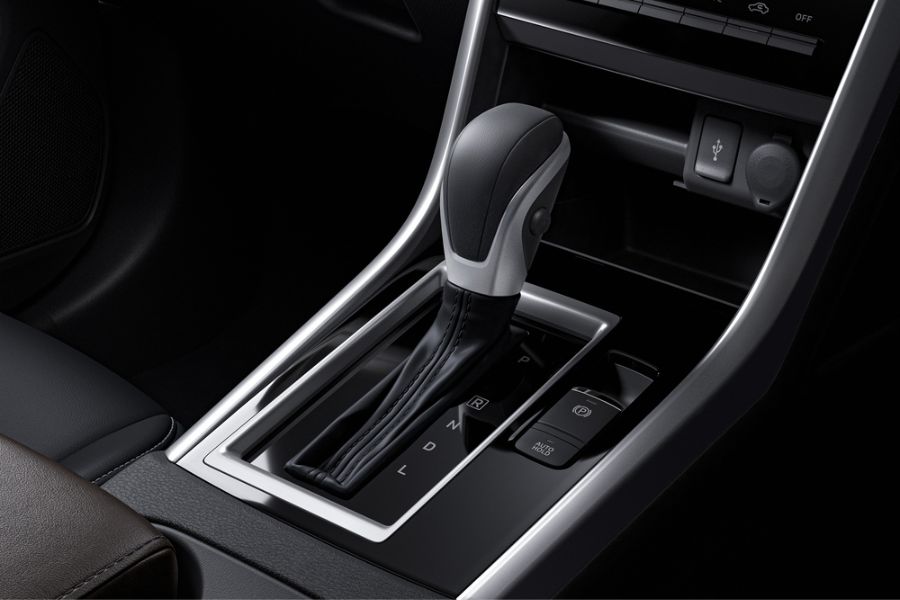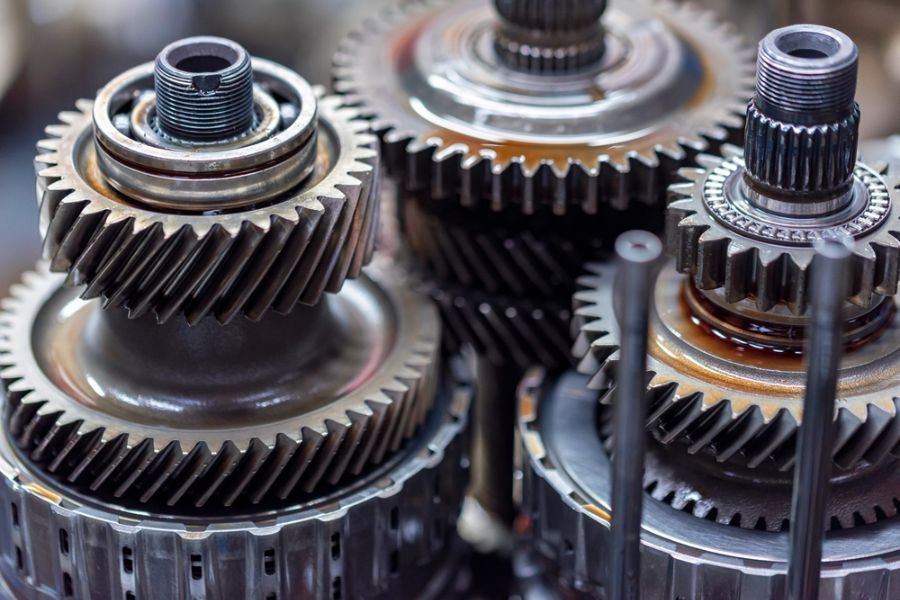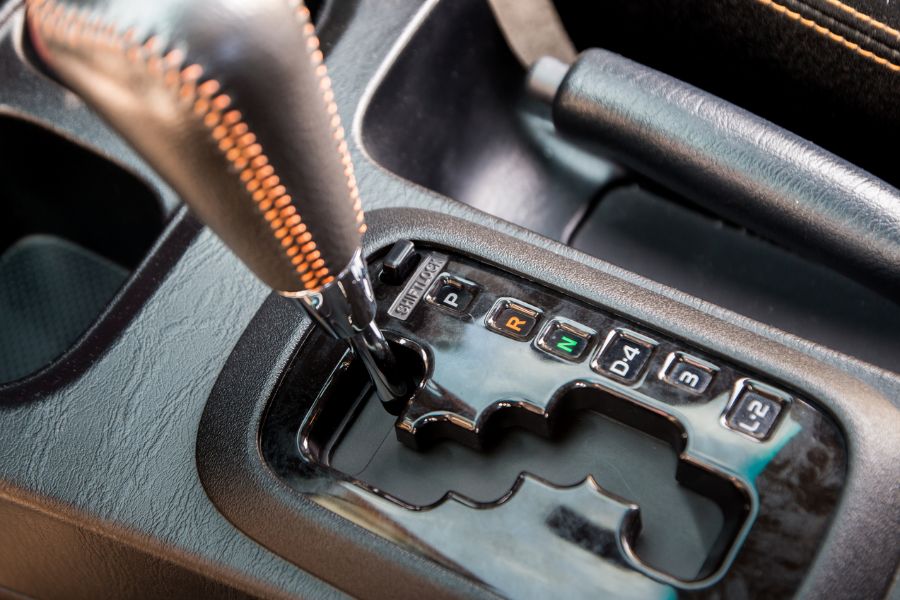You’re ready to go, but your car isn’t. You try to shift into gear, but nothing happens. We’re talking about a common headache – your automatic transmission won’t cooperate.
We’ll walk you through what an automatic transmission is, how it works, and why it’s so important. We’ll also dive into why your car might be stuck in a parking lot and how this can mess with your ride.
Why won’t my automatic car go into gear?
Imagine you’re ready to drive off, but your car just won’t budge! It’s like your car is stuck in mud. You’re shifting gears, but nothing’s happening. Let’s chat about what’s going on and why this happens.
What’s the real problem?
When your car won’t shift into gear, it’s like your car has lost its get up and go. You might notice you can move the gear stick around freely, but your car’s not going anywhere.
Or maybe your engine’s roaring, but the car’s not moving. Sometimes, there’s a pause before your car starts to move. These are all signs something’s not right.

So, why won’t my car go into gear?
A few things could be causing this:
- Transmission Fluid Issues: Think of transmission fluid as your car’s juice. It keeps everything moving smoothly. If it’s low or dirty, your gears can get sticky.
- Failed Shift Solenoid: The shift solenoid is like a traffic cop, directing fluid in the transmission. If it’s not doing its job, your car might not shift gears.
- Broken Transmission Linkage: The linkage is like a messenger between your gear stick and the transmission. If it’s broken, your car isn’t getting the message to go.
- Transmission Sensor Failure: These sensors are like the brains of the operation. They tell your car when to change gears. If they’re not working, your car might stay stuck in park.
Let’s get into the nitty-gritty
Transmission Fluid Issues: Transmission fluid is like your car’s lifeblood. It keeps everything cool and reduces friction. If it’s low or dirty, it can’t do its job, and your gears might refuse to shift.

Failed Shift Solenoid: The shift solenoid is like a traffic cop for your transmission fluid. If it’s broken, the fluid can’t go where it needs to, and your gears might not shift.
Broken Transmission Linkage: The linkage is the middleman between your gear stick and your transmission. If it’s broken, your car doesn’t know it needs to move.
Transmission Sensor Failure: These sensors are the brains of the operation. They tell your car when to shift gears based on your speed and how hard your engine is working. If the sensors fail, your car might not know when to shift gears.
How does a car act when the transmission is going out?
When your car’s transmission starts to fail, it’s like your car is crying out for help. Let’s talk about what to look for.
Signs of a Failing Transmission
Imagine you’re driving, and your car suddenly acts like it’s in neutral. This is what we call ‘gear slipping’. It’s a big red flag that your transmission isn’t happy.
Another sign is a delay in movement after shifting from ‘Park’ to ‘Drive’. If your engine revs up, but your car doesn’t move right away, it’s time for a check-up.
Car’s Acting Strange
As your transmission gets worse, your car will start acting strange. Weird noises when shifting gears, like humming or whining? Not good. Feeling a shake or grind when changing gears? That’s another warning sign.
If your car shakes at low speeds but smooths out as you speed up, that could mean trouble with your torque converter – a key part of your transmission.
Car’s Using Gas Faster
A bad transmission doesn’t just give you a bumpy ride; it can hurt your car’s performance. You might start burning through gas faster, or your car might take longer to speed up.
If you ignore these signs, your car might stop moving altogether. So don’t wait until your car gives up. If you see these signs, it’s time to take action.
Common Problems with Automatic Transmissions
We often see a few things going wrong with automatic transmissions. Clutches can wear out, making it hard to change gears. Seals can leak, which means the fluid that’s supposed to be inside the transmission isn’t there anymore.
Sometimes the torque converter, which helps pass power from the engine to the transmission, can get damaged. Or, the solenoids, which control how fluid moves inside the transmission, can stop working right. But, the biggest problem we see has to do with that transmission fluid.

The Big Problem: Transmission Fluid
The biggest headache with automatic transmissions is usually the fluid. This fluid is super important because it keeps everything inside the transmission cool and working smoothly. If there’s not enough fluid, or if it’s dirty or not the right kind, it can cause problems.
This might make your car overheat or cause too much friction inside the transmission. It can even make a mess inside with too much debris. Simple things like a leak or even a pump not working right can cause this. And you might notice your car’s gears slipping, overheating, or even not moving at all.
How This Problem Affects Your Car
This fluid problem can cause a lot of trouble for your car. If the transmission isn’t lubricated enough, parts can wear out fast. Overheating can damage parts inside, which might mean expensive repairs or replacing the whole transmission.
Your car might not be as fuel efficient, or it might be slow to speed up. It might not even be fun to drive anymore. So, taking care of any transmission fluid issues is really important to keep your car running well and for a long time.
How Do I Check My Car Transmission?
We all want our cars to run smoothly, right? One big part of that is checking your car’s transmission regularly. It helps you spot little problems before they turn into big, expensive ones. Let’s walk through why it’s important, how you can do it at home, and when you should call in the pros.
Regular Transmission Checks Are Important
Your car’s transmission needs the same regular care as you wouldn’t skip a health check-up. Regular checks help you catch small problems like leaks or wear and tear. If you ignore these, you might end up stuck with a car that won’t budge an inch!
Checking Your Car Transmission at Home
You don’t need to be a car expert to do some basic checks. Here’s a simple step-by-step guide:
- Warm up your car by starting it and letting it run for a bit.
- Find the transmission fluid dipstick. It’s usually towards the back of the engine.
- Take out the dipstick, wipe it clean, then dip it back in. Pull it out again to check the fluid level and color. If it’s between the two marks and is a clear reddish color, you’re good. If it’s brown or smells burnt, you’ve got trouble.
- Finally, check under your car for any leaks. If you see a red puddle, you’ve got a leak that needs fixing right away.
Get Professional Help for Transmission Checks
These checks are just the basics. Some problems need a pro with special tools to spot them.
Even we need to call in the pros sometimes. If your car is acting weird – things like gears slipping or strange noises – it’s time to get a mechanic to take a look. They have the know-how and tools to find and fix problems. Plus, they can do the big jobs like replacing filters or flushing the transmission fluid.
So there you have it—a simple guide to checking your car’s transmission. Add this to your car care routine to keep your ride smooth and your car chugging along for a long time.
What to Do When Your Car Won’t Move in Gear
Is your car stuck and won’t budge? Don’t worry! We’ve got some quick steps you can try and tips on when it’s time to call the pros. Plus, we’re sharing our best advice on how to stop this from happening again.
Easy Fixes for a Stuck Car
If your car won’t move, first look at your transmission fluid. If it’s low or dirty, your car might not move. Top it up if it’s low. If it’s dirty or smells burnt, it needs a change.
Next, try resetting your car’s computer. This sounds fancy, but it’s really not! Just disconnect the battery, wait for about half an hour, then hook it back up. Sometimes, this can fix a lot of car troubles.
Even after trying these fixes, if your car still won’t move, it’s time to get help. If you hear weird noises or your gear is slipping, don’t wait. Get your car to a professional. It’s better to be safe than sorry!
Stop It From Happening Again
Want to make sure this doesn’t happen again? Here’s what you can do. Keep up with your transmission maintenance. Change your fluid and filters as needed. This can stop a lot of car troubles before they start.
And remember, drive nice! Don’t be rough with your car. Slow and steady starts and stops can help keep your car running smoothly for a long time.
So, there you have it. Quick fixes, when to get help, and how to stop it from happening again. Remember, a little car care can go a long way!
Conclusion
As we’ve seen, a car that won’t move in any gear can be a big problem. It’s often a sign of major issues with the transmission. But, with the right knowledge, we can spot these issues early. We can then take action before things get worse.
Maintaining your car’s automatic transmission is crucial. It’s key to a smooth and reliable car performance. So, remember to make regular checks and maintenance a part of your routine.
Look out for common issues like transmission fluid problems and failing shift solenoids.
